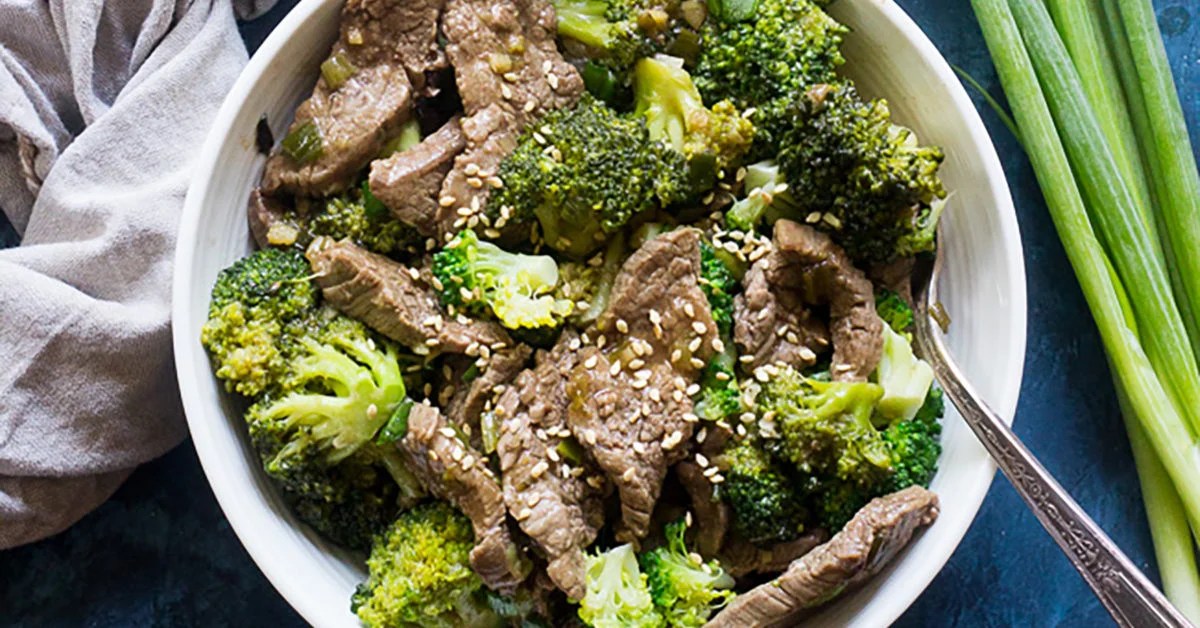Tired of soy but not willing to compromise on flavor? This culinary adventure unveils a world of delicious possibilities, showcasing vibrant soy-free alternatives that deliver on taste and texture. Prepare to explore innovative flavor-boosting techniques, global cuisine inspirations, and meticulously crafted recipes that will redefine your understanding of soy-free cooking. From hearty stir-fries bursting with aromatic spices to elegant dishes echoing the richness of international flavors, this guide offers a comprehensive toolkit for creating unforgettable meals, all without a single soybean in sight.
We’ll delve into the nutritional aspects of various soy-free protein sources, comparing them to soy and highlighting their unique benefits. Learn to master flavor-enhancing techniques that elevate your dishes to new heights, transforming simple ingredients into culinary masterpieces. We’ll even adapt beloved soy-centric recipes, providing detailed substitutions and adjustments to ensure a seamless transition to a soy-free lifestyle without sacrificing the flavors you crave.
Delicious Soy-Free Alternatives
Embarking on a soy-free culinary journey doesn’t mean sacrificing flavor or nutritional value. A world of delicious and versatile alternatives awaits, each offering unique textures and taste profiles to enrich your dishes. These options provide ample protein and other essential nutrients, making the transition smooth and satisfying.
Soy-Free Protein Sources: A Comparative Overview
Choosing the right soy-free protein source depends on the desired culinary outcome. Each option presents a distinct set of characteristics impacting texture and flavor in your recipes. Consider these five excellent alternatives: chickpeas, lentils, quinoa, hemp seeds, and edamame (soybeans excluded).
| Protein Source | Protein Content (per 100g) | Texture | Taste Profile |
|---|---|---|---|
| Chickpeas | ~19g | Creamy when cooked, firm when roasted | Slightly sweet and earthy |
| Lentils | ~25g | Tender and slightly firm | Earthy, slightly nutty |
| Quinoa | ~14g | Fluffy and slightly chewy | Mildly nutty and subtly sweet |
| Hemp Seeds | ~30g | Slightly crunchy | Nutty and slightly grassy |
| Edamame (excluding soybeans) | ~17g | Firm and slightly sweet | Fresh, vegetal, slightly sweet |
Soy-Free Recipe Creations: Mimicking Soy Textures and Flavors
These recipes showcase the versatility of soy-free alternatives, demonstrating how to achieve textures and flavors reminiscent of soy products.
Creamy Chickpea “Ricotta”
This recipe uses cooked chickpeas to create a creamy, dairy-free ricotta alternative, perfect for pasta dishes or as a spread.
- Rinse and drain one can (15 ounces) of chickpeas.
- Combine the chickpeas, 1/4 cup nutritional yeast, 2 tablespoons lemon juice, 2 tablespoons olive oil, 1 clove garlic (minced), salt, and pepper in a food processor.
- Process until completely smooth and creamy, scraping down the sides as needed. Add a tablespoon or two of water if necessary to reach desired consistency.
- Taste and adjust seasoning as needed.
Hearty Lentil “Meatballs”
These lentil “meatballs” offer a satisfyingly hearty and protein-packed alternative to traditional meatballs, ideal for pasta sauces or as a stand-alone dish.
- Cook 1 cup of brown or green lentils according to package directions.
- In a large bowl, combine the cooked lentils with 1/2 cup breadcrumbs, 1/4 cup chopped onion, 1/4 cup chopped carrots, 1 egg (or flax egg), 1 tablespoon chopped fresh parsley, 1 teaspoon dried oregano, salt, and pepper.
- Mix well to combine.
- Form the mixture into small balls (about 1 inch in diameter).
- Bake at 375°F (190°C) for 20-25 minutes, or until browned and heated through.
Quinoa and Hemp Seed “Burger” Patties
These patties offer a satisfyingly textured and flavorful alternative to soy-based burgers, providing a good source of protein and healthy fats.
- Cook 1 cup of quinoa according to package directions.
- In a large bowl, combine the cooked quinoa with 1/2 cup hemp seeds, 1/4 cup chopped onion, 1/4 cup chopped bell pepper, 1/4 cup breadcrumbs, 1 tablespoon soy-free tamari or Worcestershire sauce, salt, and pepper.
- Mix well to combine.
- Form the mixture into patties (about 3/4 inch thick).
- Cook in a lightly oiled pan over medium heat for 4-5 minutes per side, or until browned and heated through.
Nutritional Comparison: Soy-Free Alternatives vs. Soy
Soy is a complete protein, meaning it contains all nine essential amino acids. However, some individuals experience digestive issues or allergies. The soy-free alternatives offer a variety of nutritional benefits. For example, lentils are an excellent source of fiber, chickpeas are rich in folate, and hemp seeds provide healthy fats. However, it’s important to note that no single alternative perfectly replicates soy’s complete amino acid profile. A varied diet incorporating multiple soy-free protein sources ensures a balanced intake of essential amino acids.
Flavor Boosting Techniques
Unlocking the vibrant tastes of soy-free cooking requires a strategic approach to flavor enhancement. Moving beyond the familiar comfort of soy sauce, we can explore a world of rich, savory depths using readily available ingredients and simple techniques. These methods focus on building layers of flavor, creating complex and satisfying dishes that are both delicious and completely soy-free.
The following techniques offer diverse pathways to achieve a savory, umami-rich profile in your soy-free creations, highlighting the natural deliciousness of ingredients without relying on soy-based shortcuts.
Umami-Rich Mushroom Broth
Mushrooms, particularly shiitake and portobello, are naturally brimming with umami. A deeply flavorful broth forms the foundation for many dishes, adding depth and richness. This technique is particularly effective in soups, stews, and sauces.
- Sauté finely chopped shiitake and portobello mushrooms in olive oil until softened and slightly browned. Imagine the rich, earthy aroma filling your kitchen.
- Add water or vegetable broth to the pan, bring to a boil, then reduce heat and simmer for at least 30 minutes, allowing the mushrooms to infuse their umami essence into the liquid. The broth will deepen in color, transforming from a light brown to a rich, almost mahogany hue.
- Strain the broth through a fine-mesh sieve to remove the mushroom solids. The resulting broth is a concentrated elixir of umami, ready to be incorporated into your favorite recipes.
Miso-Free Fermented Black Garlic
Fermented black garlic offers a surprisingly sweet and savory depth, substituting for the umami typically found in miso paste. Its mellow sweetness and concentrated flavor make it a versatile ingredient.
- Finely mince or puree fermented black garlic. Its dark, almost obsidian color hints at its intensely concentrated flavor.
- Incorporate the black garlic puree into sauces, marinades, or directly into stir-fries. The sweetness will balance the savory notes, creating a complex taste profile.
- Consider adding a touch of black garlic puree to roasted vegetables for an unexpected depth of flavor. The roasted vegetables will take on a deep, caramelized color and an intensified savory sweetness.
Nutritional Yeast for a Cheesy, Savory Boost
Nutritional yeast, a deactivated yeast with a nutty, cheesy flavor, provides a surprising savory punch. It’s a fantastic alternative for adding umami and a creamy texture to sauces and dishes.
- Sprinkle nutritional yeast over popcorn, roasted vegetables, or pasta dishes. Its pale yellow color and flaky texture add a visually appealing element.
- Blend nutritional yeast into creamy sauces for a cheesy, savory depth. The resulting sauce will have a smooth, creamy texture and a subtle nutty flavor.
- Use nutritional yeast to create a vegan parmesan cheese substitute by blending it with nuts and spices. The mixture will resemble a coarse, crumbly parmesan, adding a delightful savory element to pasta and salads.
Tomato Paste’s Umami Secret
Tomato paste, often overlooked, is a powerhouse of umami flavor. Its concentrated nature allows it to add depth and richness to sauces and stews without overpowering other ingredients.
- Sauté tomato paste in olive oil for a few minutes until it darkens and intensifies in flavor. This process concentrates the umami and adds a subtle sweetness.
- Add the tomato paste to sauces, stews, and soups as a base flavoring agent. The sauce will deepen in color and develop a richer, more complex flavor profile.
- Use tomato paste as a marinade for meats and vegetables, enhancing their flavor and creating a beautiful glaze when cooked.
Seaweed’s Oceanic Umami
Seaweed, in various forms, offers a unique oceanic umami that adds a briny complexity to dishes. Dulse flakes, wakame, and kombu are all excellent options.
- Add dulse flakes to soups, stews, or salads for a subtle salty, umami flavor and a slightly chewy texture. The deep red color of dulse flakes adds a visual appeal to the dish.
- Incorporate wakame seaweed into stir-fries or salads for a delicate, slightly sweet, and umami-rich addition. The soft, slightly slippery texture of wakame contrasts well with other ingredients.
- Use kombu seaweed to make a dashi-like broth by simmering it in water with vegetables. The broth will have a deep, savory flavor and a subtle sweetness, perfect for soups and sauces. The kombu will impart a deep amber hue to the broth.
Soy-Free Recipe Adaptations

Embarking on a soy-free culinary journey doesn’t mean sacrificing flavor or enjoyment. Many beloved recipes can be easily adapted to exclude soy, resulting in dishes that are just as delicious, if not more so. This section explores three popular recipes, revealing how simple substitutions and clever techniques can transform them into satisfying soy-free delights. We will delve into specific ingredient swaps, provide detailed step-by-step instructions, and discuss the resulting impact on taste and texture.
Soy-Free Teriyaki Chicken
This adaptation of the classic teriyaki chicken recipe eliminates soy sauce, the main source of soy in the original, while retaining the signature sweet and savory profile. The rich, umami flavor is achieved through a combination of coconut aminos, mirin, and ginger.
The following steps will guide you through creating a delicious soy-free teriyaki chicken:
- Marinate 1 lb boneless, skinless chicken thighs in a mixture of 1/4 cup coconut aminos, 2 tbsp mirin, 1 tbsp rice vinegar, 1 tbsp grated ginger, 1 clove minced garlic, and 1 tsp sesame oil for at least 30 minutes (or up to overnight in the refrigerator).
- Heat 1 tbsp coconut oil in a large skillet over medium-high heat. Add the marinated chicken and cook until browned on both sides and cooked through, about 6-8 minutes per side.
- In a small saucepan, combine the remaining marinade with 1 tbsp brown sugar and 1 tbsp cornstarch. Bring to a simmer over medium heat, stirring constantly, until the sauce thickens.
- Pour the thickened sauce over the chicken and toss to coat. Serve immediately over rice or quinoa.
Replacing soy sauce with coconut aminos results in a slightly sweeter and less salty flavor profile. The texture of the chicken remains tender and juicy.
Soy-Free Edamame Salad
This vibrant salad typically features edamame, a soybean, as its star ingredient. This recipe substitutes the edamame with vibrant green peas and adds other elements to retain the refreshing and satisfying qualities of the original.
This step-by-step guide ensures a successful soy-free edamame salad:
- Blanch 1 cup frozen green peas until bright green and tender-crisp, about 2-3 minutes. Drain and rinse with cold water to stop the cooking process.
- In a large bowl, combine the blanched peas with 1/2 cup chopped cucumber, 1/4 cup chopped red onion, 1/4 cup chopped cilantro, and 1/4 cup toasted sesame seeds.
- Whisk together 2 tbsp rice vinegar, 1 tbsp sesame oil, 1 tbsp honey, and a pinch of salt and pepper for the dressing.
- Pour the dressing over the salad and toss gently to combine. Serve chilled.
Using green peas instead of edamame provides a similar textural element, while maintaining a refreshing crunch. The overall flavor is subtly different, slightly less earthy than the original edamame salad, but equally enjoyable.
Soy-Free Stir-Fried Tofu
Traditionally, tofu, a soy-based product, is the core ingredient in many stir-fries. This recipe uses firm or extra-firm tempeh, a fermented soybean product, as a hearty and flavorful alternative. Note that tempeh is still a soy product, however, if you need to avoid all soy, consider using firm or extra-firm seitan, a wheat-based meat substitute.
Here’s a detailed guide to making a delicious soy-free stir-fried “tofu”:
- Press 1 block of firm or extra-firm tempeh to remove excess moisture. Cut into bite-sized cubes.
- Marinate the tempeh cubes in 2 tbsp coconut aminos, 1 tbsp rice vinegar, 1 tbsp maple syrup, and 1 tsp grated ginger for at least 15 minutes.
- Heat 1 tbsp coconut oil in a wok or large skillet over medium-high heat. Add the marinated tempeh and stir-fry until browned and crispy on all sides, about 8-10 minutes.
- Add 1 cup of your favorite vegetables (e.g., broccoli, carrots, bell peppers) and stir-fry for another 5-7 minutes, until tender-crisp.
- Serve immediately over rice or noodles.
Tempeh offers a chewier texture compared to tofu, and its slightly nutty and earthy flavor adds depth to the stir-fry. The marinade helps to tenderize the tempeh and enhance its flavor.
Embarking on a soy-free culinary journey doesn’t mean sacrificing flavor; it means unlocking a world of exciting possibilities. Through the exploration of diverse protein sources, innovative flavor techniques, and globally inspired recipes, you’ll discover a new appreciation for the versatility of soy-free cooking. The vibrant colors, tantalizing aromas, and satisfying textures of these dishes will leave you amazed at the culinary richness achievable without soy. So, ditch the soy, embrace the flavor, and embark on a delicious adventure that will redefine your approach to cooking and eating.
Question & Answer Hub
What are some common soy-free protein sources that are easy to find?
Tofu alternatives like tempeh, seitan, and hearts of palm offer excellent protein and versatile textures. Lentils, chickpeas, and mushrooms are also great choices, providing unique flavor profiles.
Can I use soy-free alternatives in baking?
Absolutely! Many soy-free flours, like almond flour or chickpea flour, work well in baking. Experiment with different options to find your favorites.
Are all soy-free products automatically healthy?
Not necessarily. Always check the nutritional information, as some soy-free products may be high in sodium, fat, or other additives.
How can I ensure my soy-free dishes have a satisfying umami flavor?
Umami can be achieved using ingredients like mushrooms, nutritional yeast, seaweed, or fermented foods such as miso (ensure it’s soy-free).


